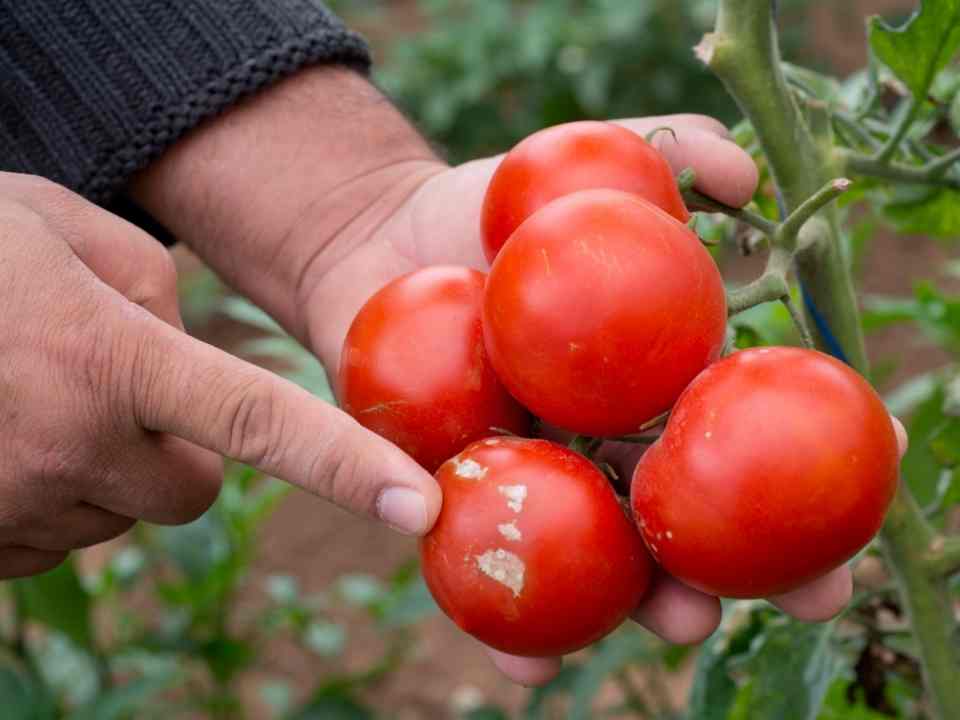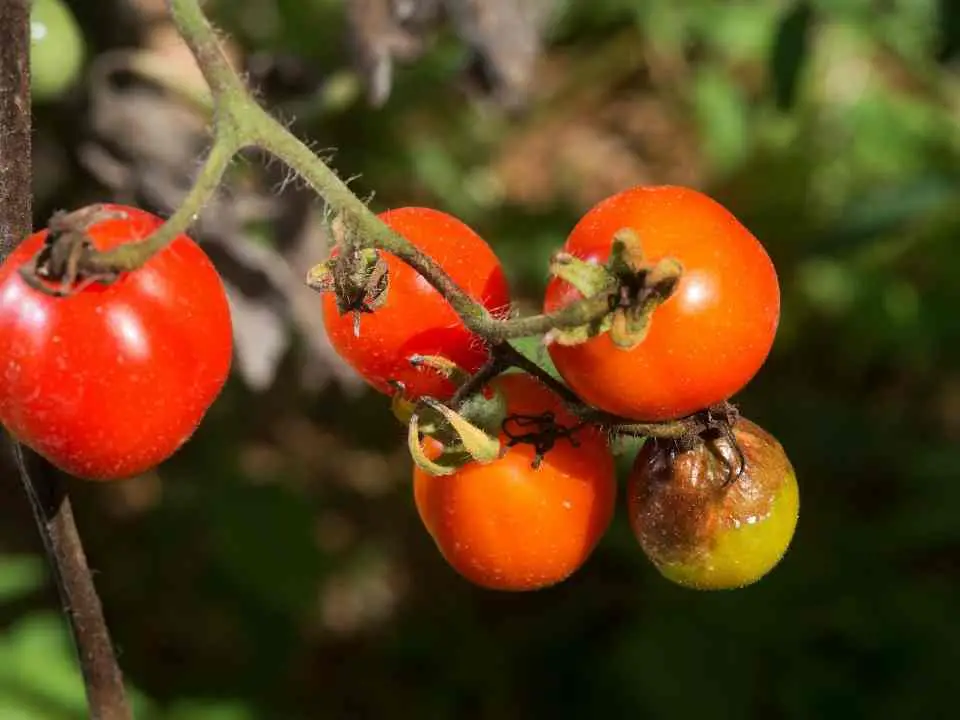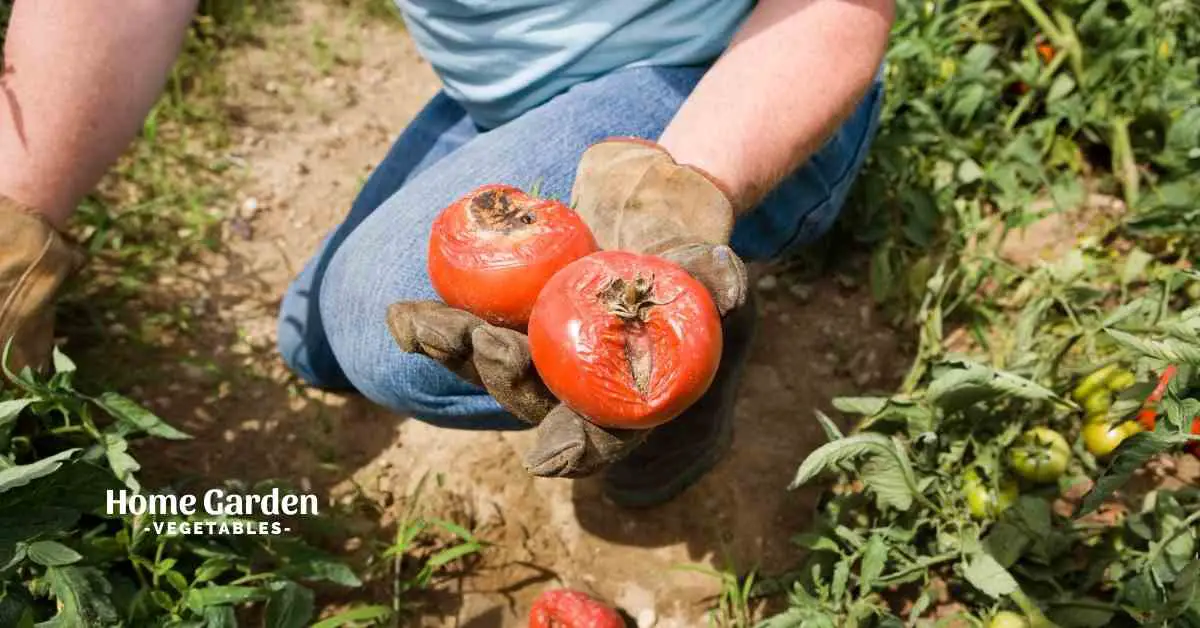Late blight is a devastating disease that affects potatoes and tomatoes. The disease acts fast to kill off the foliage and rot fruits before you can pick those desirable, unblemished tomatoes. At this point, you may wonder if you could salvage some tomatoes and bring them to use. Can you eat tomatoes affected by blight? Let’s find out more.
What Is Late Blight In Tomatoes?
Late blight is caused by a fungus-like pathogen called Phytophthora infestans. Phytophthora is a Latin word that means ‘plant destroyer’. The spores spread quickly under favorable conditions, posing a major threat, not just for home gardeners but for commercial growers as well. The key to treating this is to catch it early. Blight dosent just cause a limited amount of damage or reduce yield. Blight can cause a complete crop failure if not caught in time.
Reader Poll: What online courses would interest you?
Late blight in potato caused Irish potato famine back in the 1840s – that’s how destructive the disease can be.

How To Identify Late Blight
Late blight typically occurs late in the season, initially appearing as water-soaked spots on the older leaves and stems of the tomato plant. They progress into large brown blotches with grayish edges. Eventually, large patches of foliage turn brown and dry. It can quickly spread through the field, causing brown, dry patches of stems and foliage on the surrounding plants. When the weather is cool and wet, the entire crop will appear brown and wilted.
Infected tomato fruits are first identified by black or brown lesions on the stem end. The irregular brown spots on the fruit turn darker, larger and leathery with time until the fruit rots completely. The spots are typically firm, but may also turn mushy in some cases. When the humidity is high, you may also spot a thin film of powdery white fungal growth on the infected stems, leaves and fruit.
Subscribe to our newsletter!
Are Blight Infected Tomatoes Safe For Eating?
Though late blight wreaks havoc on plants, you’ll be relieved to know that it doesn’t affect humans. If the tomatoes are close to ripening harvest them promptly. Cut out any ingected part and wash the remaining fruit.
Be sure to wash the fruit properly to get rid of any spores before you consume it. Though the disease isn’t harmful to humans, the idea of having pathogens going inside your body can be disturbing to many.
However, since blight often infects the crop before the fruits get a chance to start ripening, the ripening is halted or inhibited. Often the fruit will rot completely before it even gets a chance to ripen. Depending on when exactly you are able to harvest the tomatoes, you may be able to bring them to some use.

How To Ripen Blight Infected Tomatoes
Blight often infects the plant while the tomatoes are still green or just starting to ripen. Should you leave the fruits on the vines to ripen further? Often it’s a bad idea to ripen tomatoes on the vines once the plant is infected. The disease will progress on the fruit with the rest of the plant. Blight will likely cause it to rot before you get a chance to harvest the tomatoes.
If you notice a plant is infect and has fruit that is maturing its best to follow these simple steps.
- Pick the unaffected fruits from infected plants just when they start to change color
- Thorougly wash the fruit as spores on the fruit may cause them to rot off the plant.
Dip the green fruits into a 10% bleach solution to kill the spores before rinsing them thoroughly with water. Dry the washed fruits before placing them in a cardboard box such that they don’t come in contact with each other. Check them every few days and take out the ripe fruits. Remove and discard any fruits that start to rot.
Are Blight Infected Tomatoes Suitable For Canning?
Though blight-infected tomatoes may be consumed after you cut out the lesions, they are NOT recommended for canning or preserving. Tomatoes are naturally acidic. The acidity of the fruit prevents bacteria and toxins from forming in canned tomatoes.
Diseases, including late blight have a tendency to raise the pH level of tomatoes. The insufficient acidity in diseased tomatoes increases the chances for toxins to thrive in canned products, rendering it unsafe for human consumption.
If you are planning on canning or preserving your tomato harvest in any way, always go for the healthiest, freshest and disease-free tomatoes. Adding some lemon juice or citric acid to fresh, disease-free tomatoes further acidifies the mixture, further preventing any chances of spoiling.
Preventing Blight In Tomatoes
It’s difficult to control the disease once it appears in your garden. Prevent late blight from infecting your tomato crop by choosing resistant varieties. Currently, there aren’t many varieties resistant to the disease, except Mountain Magic and Crimson Crush.
The disease prefers wet, humid conditions so always water early morning to allow the plants to dry out in the bright afternoon sun. Use stakes and tomato cages to keep the vines off the ground and avoid overwatering to prevent humidity around the plants. Choose certified disease-free seeds or seedlings from reputed nurseries or retailers and practice crop rotation to limit the chances of the disease.
Does Blight Live in the Soil?
Blight does not live in the soil nor can it survive in the soil. Blight lives in living plant material. It will compost down after a long period or time but the best thing to do is burn the infected plant.
Controlling Blight In Tomatoes
Early signs of infection can be controlled by pruning the diseased branches and discarding them. Treat the rest of the plant with copper-based fungicides to discourage the spread of the infection. If the disease is in its advanced stages, pull out and discard the entire plant to prevent it from spreading to the surrounding plants. After harvest, pull out all the tomato plants and dispose correctly. It is better to burn it to prevent it from spreading the spores.

Conclusion
Can you eat tomatoes affected by blight? Now you know that you can. Remove all the lesions and eat away the healthy, unblemished parts. That being said, whenever in doubt, toss it in the garbage can! Your health is, after all, most important. Remember, don’t even consider preserving blight infected tomatoes!

